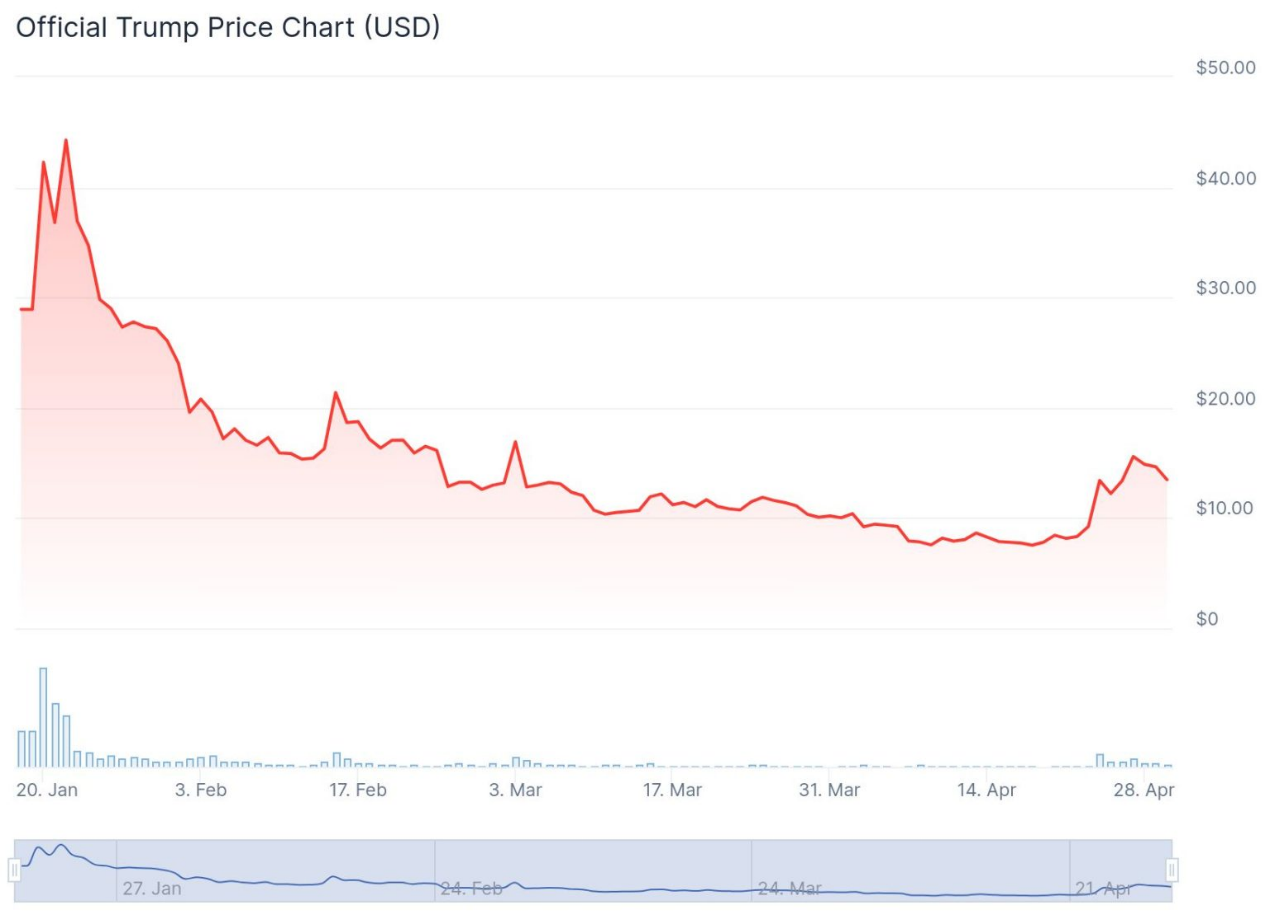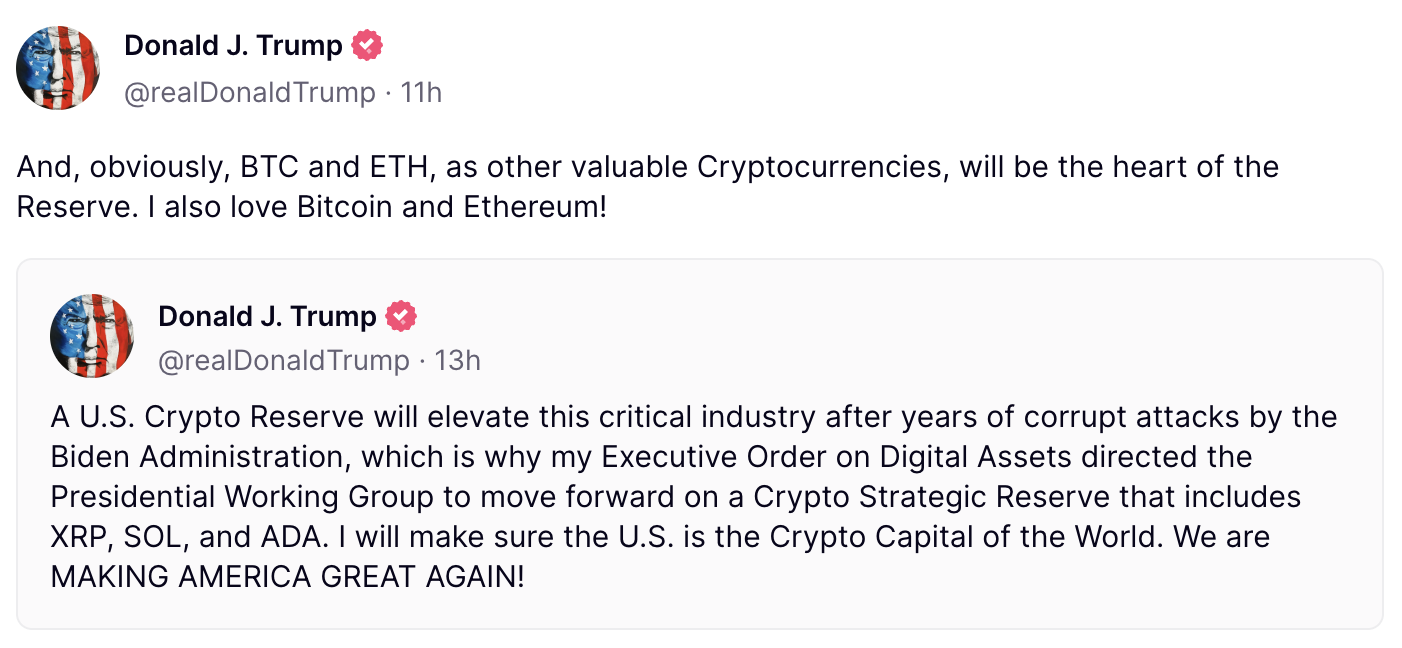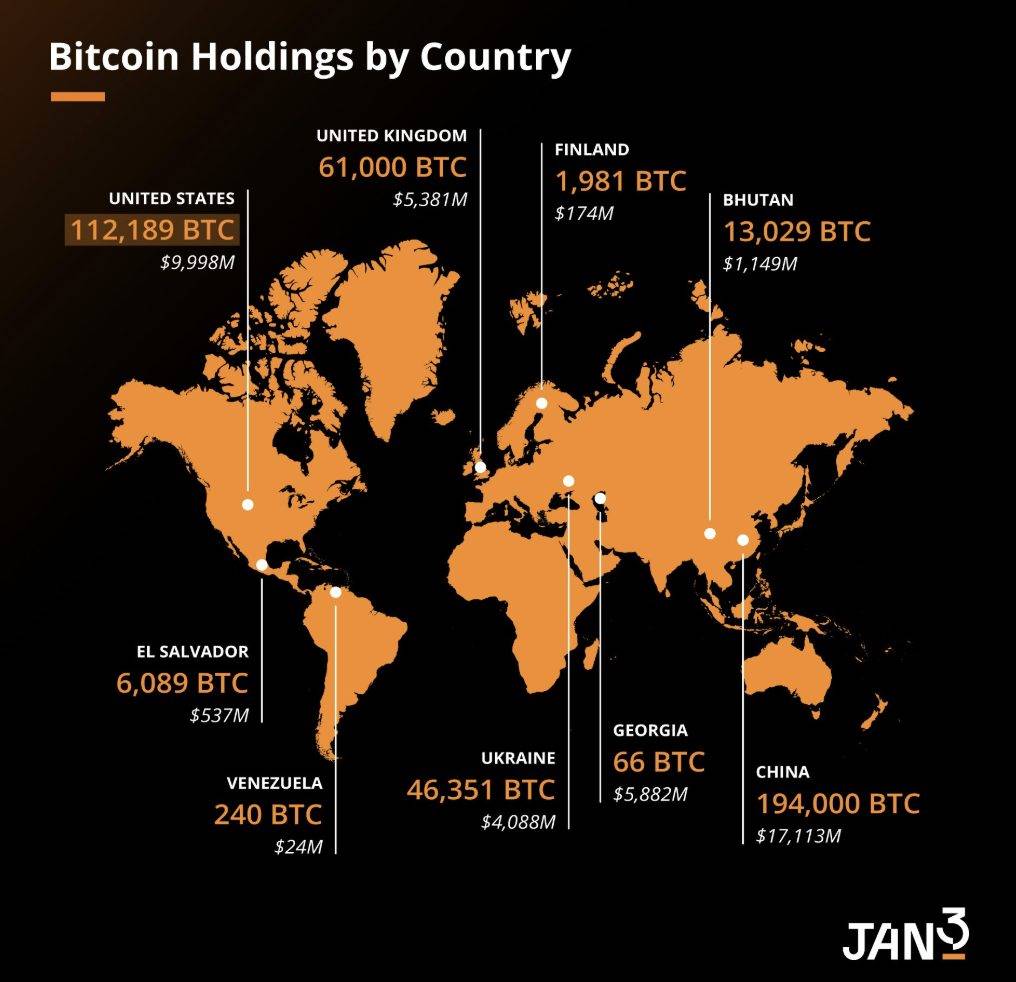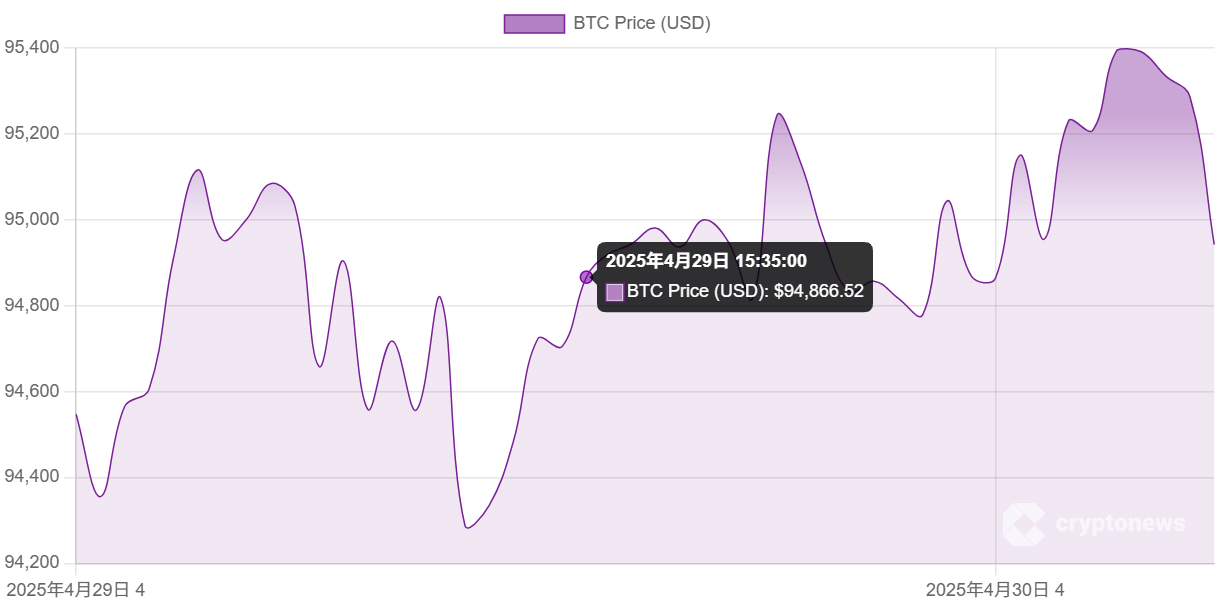Author: Connor Sephton, CryptoNews
Translated by: Felix, PANews
Trump has been back in the White House for 100 days, during which global markets have been turbulent, filled with uncertainty and chaos.
When Trump was successfully re-elected, the crypto market was full of hope. However, despite issuing some important pro-Bitcoin statements after taking office, crypto enthusiasts were still disappointed.
On the eve of the inauguration, Trump released the official token $TRUMP, which sparked market frenzy and controversy. Some critics argued that this move presented clear conflicts of interest and could even threaten national security.
Currently, $TRUMP has dropped 82% from its historical high of $75.35 on January 19th. The performance of $MELANIA was even worse, plummeting nearly 97%.

Source: CoinGecko
After taking office, people speculated that Trump would sign a series of executive orders supporting cryptocurrencies on his first day, including establishing a strategic Bitcoin reserve. However, these orders were not issued. On January 20th, Bitcoin briefly soared to a record $109,000, and has never returned to that level since.
Trump did quickly fulfill some campaign promises made at the 2024 Bitcoin Conference in Nashville. Ross Ulbricht, the founder of the Dark Web market "Silk Road", received a full and unconditional pardon. Photos circulating online show him smiling for the first time after 11 years in prison. Reports suggest that Sam Bankman-Fried (SBF) is also lobbying for a pardon, but this has not been realized.
Meanwhile, several Bitcoin-friendly members of Trump's cabinet were quickly approved by the Senate. This includes Treasury Secretary Scott Bessent, who declared: "Cryptocurrency is about freedom, and the crypto economy will exist for a long time."
Others faced severe scrutiny. Commerce Secretary Howard Lutnick was harshly criticized in confirmation hearings but downplayed questions about his company's relationship with Tether.
The White House appointed David Sacks as the first AI and cryptocurrency "czar". Before taking office, he had sold his BTC, ETH, and SOL holdings. This appointment was widely praised, with even Trump critic Anthony Scaramucci of Skybridge Capital expressing appreciation.
Moreover, Trump's enterprises are increasingly involved in digital assets, with the Trump Media Technology Group accumulating substantial cryptocurrency reserves and launching a series of ETFs.
For Trump, there's a simple rule: always be prepared for the unexpected. As early as March 2nd, Trump suddenly announced on Truth Social his intention to create an "American Crypto Reserve" containing XRP, Solana, and Cardano. The news caused these Altcoins' prices to surge dramatically, with some rising up to 70%. However, the initial post did not mention BTC and ETH, but subsequent supplementary statements emphasized that these two flagship digital assets would also be "at the core of the reserve".

The news that BTC would be lumped together with other Altcoins quickly sparked heated debate, with experts calling the proposal "absurd" and "chaotic". Concerns were raised about the plan's feasibility, worrying that it might require congressional approval and that specific details were scarce, with no information on fund allocation, reserve funding sources, or implementation timeline.
All these issues ultimately became irrelevant. Trump made a sharp turn and quickly signed an executive order to establish a strategic Bitcoin reserve as originally planned - while also reserving other cryptocurrencies.
Despite marking one of the largest adoption milestones in Bitcoin history, BTC was heavily sold as investors digested the news. Why? Because the executive order stated that no new BTC could be purchased as a reserve unless acquired without impacting the budget, except for Bitcoin seized from criminals. This was also negative news for XRP, SOL, and ADA, as the US currently does not hold these tokens.
Bitcoin supporters had generally expected the US to become a significant Bitcoin buyer and achieve Senator Cynthia Lummis's ambitious goal of accumulating 1 million Bitcoins within five years. However, using taxpayer money for this would be extremely hypocritical, especially considering Musk's commitment to drastically cutting federal government spending.
Arkham Intelligence data shows the US currently holds about 198,000 Bitcoins, valued at approximately $18.8 billion. However, as JAN3 CEO Samson Mow pointed out, the actual scale of the US strategic Bitcoin reserve might be much smaller - because 95,000 Bitcoins will ultimately be returned to Bitfinex. Nevertheless, Mow remains optimistic, believing the significance of Trump's policy is still "substantial" as it will encourage other major economies to follow suit.

Shortly after announcing the Bitcoin reserve, the White House hosted its first cryptocurrency summit on March 7th, with industry giants like MicroStrategy's Michael Saylor and Coinbase's Brian Armstrong attending. However, external evaluations of the summit were mixed, with some analysts viewing it as "more of a political stage than a meaningful policy forum".
Investors had more pressing issues to handle, with Trump facing accusations of deliberately suppressing the stock market to force the Federal Reserve to lower interest rates. The S&P 500 and Nasdaq 100 indices, dominated by tech stocks, were severely impacted, and their close correlation meant Bitcoin sales were even larger.
After "Liberation Day", the situation worsened, with the president announcing comprehensive and punitive tariffs on some of America's closest trading partners, causing import costs to rise significantly. As the possibility of economic recession increased and the verbal war between Washington and Beijing escalated, Bitcoin fell to around $80,000 in early April.
Bitcoin once faced the risk of dropping below $75,000, a 30% discount from its historical high on inauguration day. However, Trump's confirmation of a 90-day suspension of reciprocal tariffs for most countries, while further increasing tariffs on China to 145%, temporarily provided some market relief. When smartphones and computers were exempted from these aggressive trade policies, market optimism further ignited. However, the White House's constant flip-flopping left investors anxious and exhausted, with many now reducing their US asset holdings and turning to gold investments.
Now, keeping up with Washington's endless news is almost impossible. Amidst all this, Trump intensified his attacks on Federal Reserve Chairman Jerome Powell - posting on Truth Social that "Powell should be fired as soon as possible!"
Although presidents typically cannot dismiss heads of independent federal agencies, a Supreme Court case might change this precedent, potentially allowing Trump to start interfering with the Federal Reserve's affairs. Critics from various political factions worry this could trigger another market crash, with the S&P 500 index once near bear market territory.

A key appointment was slightly delayed, namely the confirmation of SEC Chairman Paul Atkins, who was selected to replace the anti-cryptocurrency Gary Gensler. This appointment was finally completed last week, and one of his primary tasks will be to decide whether to approve ETFs tracking Altcoins like XRP.
Meanwhile, despite the price of $TRUMP falling, the team behind it came up with an innovative way to attract attention. They will host an "exclusive" dinner for the 220 people holding the most tokens, sparking a hoarding frenzy between now and May 12th. Upon this news, $TRUMP's value surged by 64%.
However, some people on crypto Twitter felt uneasy, believing the dinner is "a trap designed to sell and earn more profits from those buying due to FOMO". One analyst urged those who bought $TRUMP at high prices to sell quickly.
Over the past 100 days, Bitcoin dropped 12%, while the S&P 500 fell 8.6%. Tariff threats continue to linger. A new CNN poll shows 59% of Americans believe Trump's policies have worsened the US economy. About 60% think he has exacerbated the cost of living crisis, with increasing consumer concerns about an imminent economic recession.
Meanwhile, expectations of Bitcoin reaching a new high this year are rapidly fading. On the Polymarket platform, only 67% believe Bitcoin will break $110,000 by the end of 2025, with probabilities of breaking $120,000, $130,000, and $150,000 dropping to 54%, 40%, and 30% respectively. In January, these targets were considered quite conservative, illustrating how quickly situations can change.
Trump's political volatility and unpredictability make it almost impossible to predict what will happen next week, let alone next month or next year. This makes predicting Bitcoin's future trajectory even more challenging. Bold and confident price predictions should be approached with caution.
Tremendous changes have occurred in the past 100 days, but 1,361 days remain ahead.







